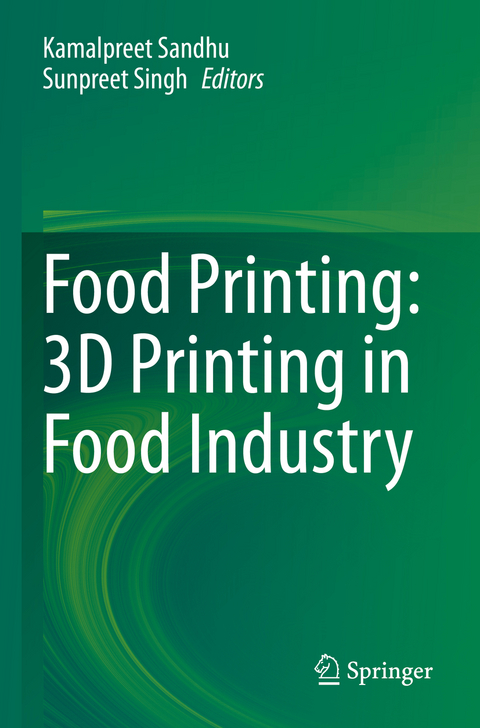
Food Printing: 3D Printing in Food Industry
Springer Verlag, Singapore
978-981-16-8123-3 (ISBN)
Recent advancements in manufacturing processes have led food industries to create innovations to stay competitive in the market. 3D food printing incorporates 3DP digital gastronomy strategies to manufacture food products with consistency in shape, color, flavor, texture, and even nutrition. Thus, by controlling the number of materials and the quality of nutrients, food items can be manufactured and handled to fulfill their particular requirements. For food printing, both proprietary structures and self-developed frameworks are used from open sources.
Similar frameworks are re-engineered to reformulate administration, content creation, and user interface. For example, three printing medium types,natural printable products, non-printable synthetic food products, and alternative ingredients as well as two recipe forms (i.e., element-based recipes and regular recipes) are used for customized food production. The authors address that open 3D technology for food printing and food processing technology are theoretically correlated with food printing.
The book will help industrial designers, nutrition professionals, dieticians, manufacturing enterprises, and young researchers in food technology, material science, and mechanical engineering understand the latest advances in 3DP technology in food industries.
Kamalpreet Sandhu is an assistant professor in the Product and Industrial Design Department at Lovely Professional University, Phagwara, Punjab, India. His area of research is design thinking, 3D printing, and ergonomics for podiatric medicine. He has established a research collaboration with Prof. Karupppasamy Subburaj at Singapore University of Technology and Design (SUTD), Singapore, on medical device design and biomechanics. Sunpreet Singh is a researcher in NUS Nanoscience & Nanotechnology Initiative (NUSNNI). He has received a PhD in mechanical engineering from Guru Nanak Dev Engineering College, Ludhiana, India. His area of research is additive manufacturing and the application of 3D printing for the development of new biomaterials for clinical applications. He is working in collaboration with Prof. Seeram Ramakrishna, NUS Nanoscience & Nanotechnology Initiative, and Prof. Rupinder Singh, manufacturing research lab, GNDEC, Ludhiana.
Chapter 1. Materials for Food Printing.- Chapter 2. Fundamentals of Food Printing.- Chapter 3. 3D Food Printing and its Process Parameters.- Chapter 4. Food Printing: Unfolding a New Paradigm for Designer and User.- Chapter 5. 3D Food Printing: Methods, Processing and Nutritional Aspects.- Chapter 6. 3D Printing Technology: 3D Printers, Technologies and Application Insights in the Food Diligence.- Chapter 7. 3D Food Printing based on Starch-based Inks: Crucial Factors for Printing Precision.- Chapter 8. Development of Cost-effective and Sustainable Alternative Protein From Drosophila and Consumer Acceptability of Drosophila Protein Using 3D-Printing.- Chapter 9. Commercial Market of Food Printing Technologies.- Chapter 10. Prevention of 3D Printed Food From Spoilage.-
| Erscheinungsdatum | 10.02.2023 |
|---|---|
| Zusatzinfo | 1 Illustrations, black and white; IX, 181 p. 1 illus. |
| Verlagsort | Singapore |
| Sprache | englisch |
| Maße | 155 x 235 mm |
| Themenwelt | Naturwissenschaften ► Biologie ► Mikrobiologie / Immunologie |
| Technik ► Lebensmitteltechnologie | |
| ISBN-10 | 981-16-8123-6 / 9811681236 |
| ISBN-13 | 978-981-16-8123-3 / 9789811681233 |
| Zustand | Neuware |
| Informationen gemäß Produktsicherheitsverordnung (GPSR) | |
| Haben Sie eine Frage zum Produkt? |
aus dem Bereich


